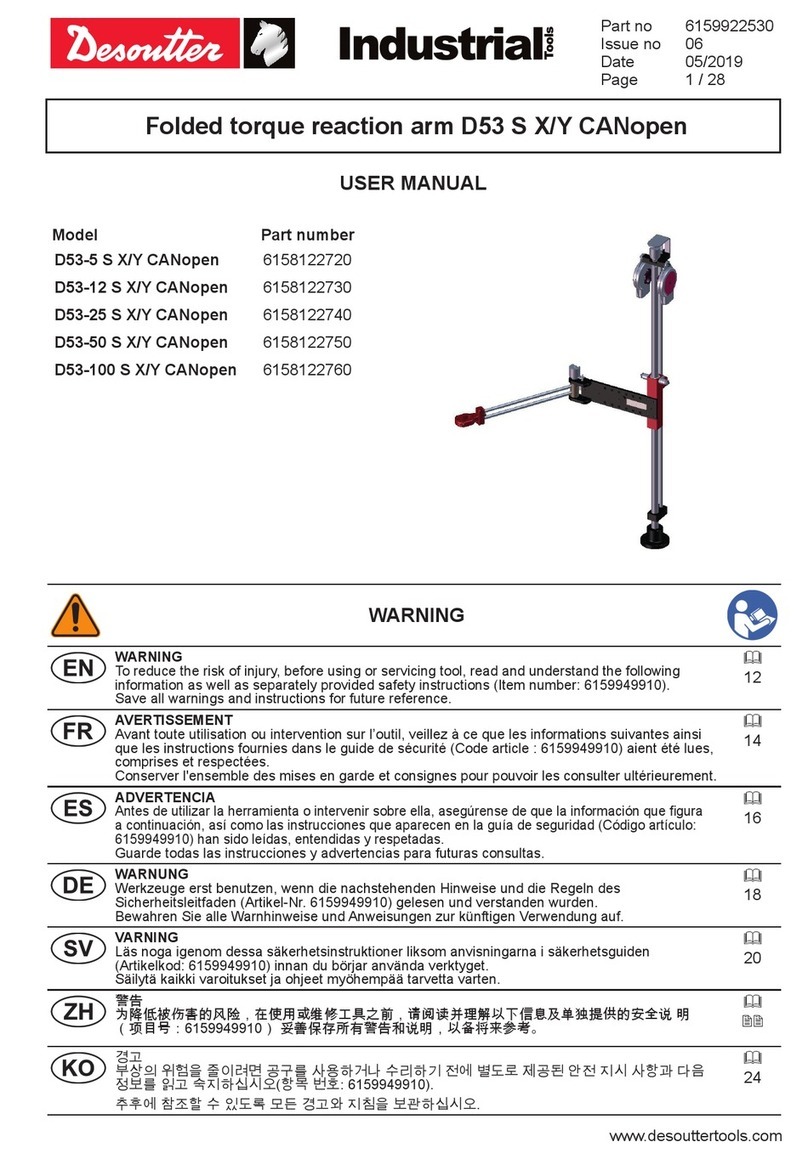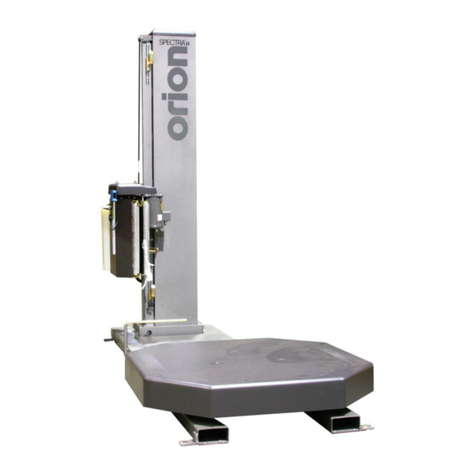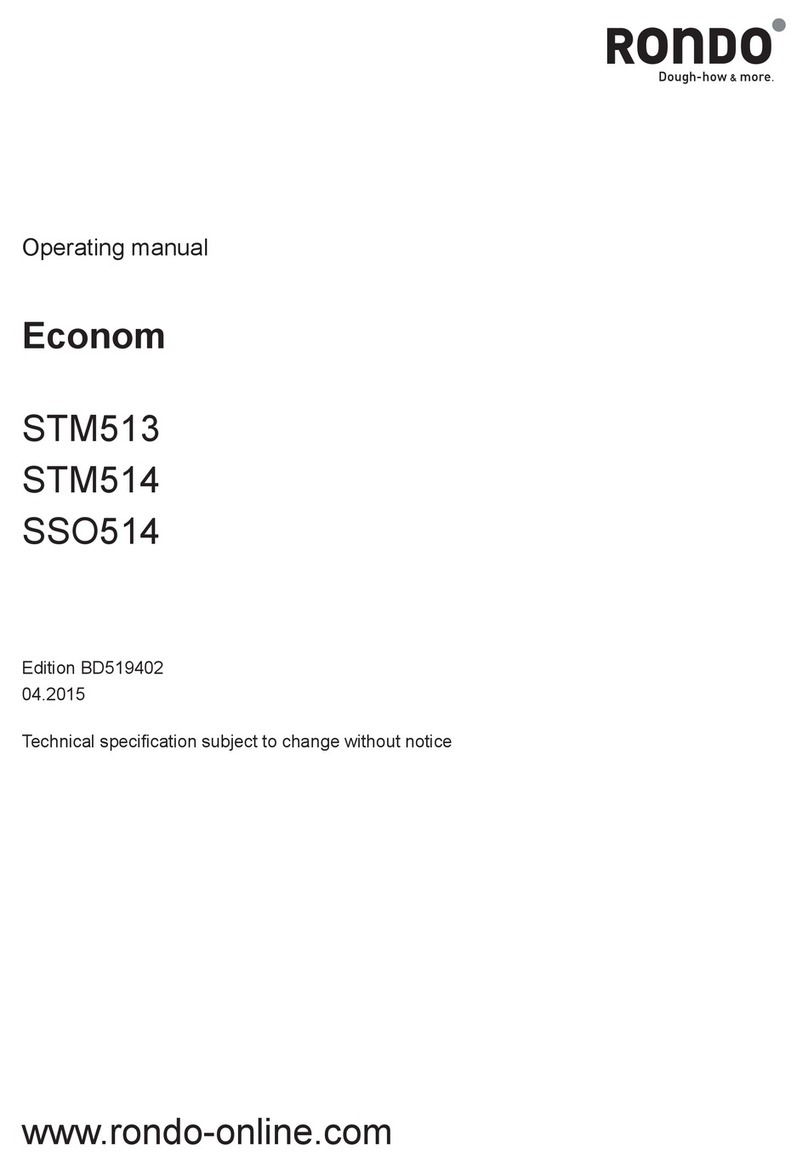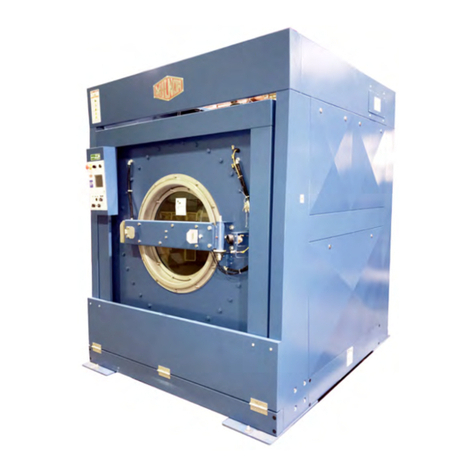KRUEGER LMHS Instruction manual

WWW.KRUEGER-HVAC.COM
Installation, Operation & Maintenance Manual
for Krueger Terminal Units:
LMHS, LMHS-LC, RVE, SVE
SINGLE-DUCT
& RETROFIT
TERMINAL UNITS

Single-Duct and Retrofit Terminal Units IOM
PRE INSTALLATION...................................................................................3
General ...............................................................................................................3
Shipping..............................................................................................................3
Storage And Handling .....................................................................................3
Unit Weights .....................................................................................................3
Installation Inspection.....................................................................................3
Unit Identification............................................................................................3
Installation Precaution....................................................................................3
Service Access .................................................................................................3
Codes .................................................................................................................3
Warranty............................................................................................................3
Maintenance......................................................................................................4
Control Arrangements ....................................................................................4
INSTALLATION ...........................................................................................5
Step 1 Install Unit ............................................................................................5
Step 2 Make Duct Connections ....................................................................5
Step 3 Install Sensors and Make Field Wiring Connections...................5
CONTROLS SETUP.....................................................................................6
General ...............................................................................................................6
Set Point.............................................................................................................6
System Calibration of Airflow Sensor.........................................................6
Pneumatic Controls.........................................................................................8
Analog Controls................................................................................................11
Water Valve Installation..................................................................................15
APPENDIX A...............................................................................................15
REPLACEMENT PARTS..............................................................................21
TABLE OF CONTENTS

3
Single-Duct and Retrofit Terminal Units IOM
GENERAL
The LMHS, LMHS-LC, RVE, and SVE single duct terminals are
available with factory installed Pneumatic, Analog electronic,
and DDC control options. Figure 1 shows a basic LMHS unit.
SHIPPING
Inspect for damage upon receipt. Shipping damage claims
should be filed with shipper at time of delivery. LMHS and
LMHS-LC units with basic configuration or with hot water
coils, RVE units, and SVE units are packaged into boxes and
are stacked onto pallets. LMHS and LMHS-LC units with
attenuation or electric heat are stack directly onto pallets.
In both instances, pallets shall not be stacked on top of one
another.
STORAGE AND HANDLING
Store in a clean, dry, and covered location. Do not stack
pallets. When unpacking units, care should be taken that
the inlet collars and externally mounted components do not
become damaged. Do not lift units using collars, inlet flow
sensors, or externally mounted components as handles. Do
not lay uncrated units on end or sides. Do not stack uncrated
units over 6 ft high. Do not handle control boxes by tubing
connections or other external attachments.
UNIT WEIGHTS
Please see Table 5.A and Table 5.B in Appendix A for unit
weights.
INITIAL INSPECTION
Once items have been removed from the carton, check
carefully for damage to duct connections, inlet probes or
controls. File damage claim immediately with transportation
agency and notify Factory.
Figure 2: Example Identification Label
FOR OPERATIONS & MAINTENANCE MANUAL SEE
WWW.KRUEGER-HAVAC.COM
TAG: VAV-1-01
FACTORY NO: 441261
MODEL NO: LMHS
MAX CFM: 400
VP: .190
FAN CFM:
COIL: E41 - 277/1P/1S
CONTROL CODE: D001
LINE: 001
AUX CFM: 400
VP: .156
SIZE: 08-08
MIN. CFM: 52
VP: .003
COIL: E41 - 277/1P/1S
CONTROL CODE: D001
AIR
FLOW
UP
CFG: 3*3*2*OR*08*0*D001*00*0*0S0000*000*E41*4.0*KH000
UNIT IDENTIFICATION
Each unit is supplied with a shipping label and an
identification label. Figure 2 is an example of the
identification label that is attached to each unit.
INSTALLATION PRECAUTION
Check that construction debris does not enter unit or
ductwork. Do not operate the central-station air-handling
fan without final or construction filters in place. Accumulated
dust and construction debris distributed through the
ductwork can adversely affect unit operation.
SERVICE ACCESS
Provide service clearance for unit access.
CODES
Install units in compliance with all applicable code
requirements.
WARRANTY
All Krueger furnished items carry the standard 1-year limited
warranty from the date of shipment.
Figure 1: Basic LMHS Unit
PRE-INSTALLATION

4
Single-Duct and Retrofit Terminal Units IOM
MAINTENANCE
No periodic preventative maintenance required, unless
called for by specific control sequence.
CONTROL ARRANGEMENTS
The LMHS / LMHS-LC single duct and RVE / SVE retrofit
units are offered with a wide variety of factory-mounted
controls that regulate the volume of air delivery from the
unit and respond to cooling and heating load requirements
of the conditioned space. Stand-alone controls will fulfill
the thermal requirements of a given control space. These
devices are available in both pneumatic and electronic
arrangements. A number of DDC (Direct Digital Controls)
control packages by others are available for consignment
mounting, as indicated.
Each control approach offers a variety of operating functions;
a control package number identifies combinations of control
functions. The following listings contain the basic function
arrangements for each control offering. Because of the
variety of functions available, circuit diagrams, operating
sequences, and function descriptions are contained in
separate Application Data publications. Refer to the specific
control publication for details.
Direct Digital Electronic Control Arrangement (Field Supplied)
Control packages are field supplied for factory mounting,
unless otherwise noted. All DDC control arrangements
include an inlet flow sensor, 24V transformer (optional),
and control enclosure. Contact factory for details about
mounting field-supplied controls.
Analog Electronic Control Arrangement
Pressure independent control packages are available
without supplemental heat, with on/off hot water or
electric heat, proportional hot water heat, or with cooling/
heating automatic changeover control. All analog control
arrangements include an inlet flow sensor, 24V transformer
(optional), control enclosure, and wall thermostat with LCD
display.
2100: Heating control
2101: Cooling control
2102: Cooling with on/off electric heat control
2103: Cooling with on/off hot water heat control
2104: Cooling/heating automatic changeover control
2105: Cooling with proportional hot water heat control
2110: Cooling with solid state LineaHeat proportional heat control
2111: Cooling/heating with automatic change over with up
to 3 stages of electric heat control
2113: Cooling/heating with automatic change over with
solid state LineaHeat proportional heat
2115: Upstream static pressure monitoring
2116: Downstream static pressure monitoring
Pneumatic Control Arrangement
All control packages are pressure independent (unless
otherwise noted) and available with or without hot water
heat, dual maximum airflow, heating and cooling maximum
airflow and dual minimum airflow. All control arrangements
include a standard K4 LineaCross inlet flow sensor.
1100 (Actuator only): DA-NC Pressure dependent control
1101 (Actuator only): RA-NO Pressure dependent control
1102 (Single function controller): DA-NO with or without
hot water or electric heat
1103 (Single function controller): RA-NC with or without
hot water or electric heat
1104 (Multi-function controller): DA-NO with or without
hot water or electric heat
1105 (Multi-function controller): DA-NC with or without hot
water or electric heat
1106 (Multi-function controller): RA-NO with or without hot
water or electric heat
1107 (Multi-function controller): RA-NC with or without hot
water or electric heat
1108 (Dual Maximum Control): DA-NO with or without hot
water or electric heat
1109 (Heating/Cooling Maximum Control): DA-NO with or
without hot water or electric heat
1110 (Dual Minimum Control): DA-NO with or without hot
water or electric heat
1111 (Dual Minimum Control): RA-NO with or without hot
water or electric heat
1112 (Heating/Cooling Maximum Control): RA-DO with or
without hot water or electric heat
Pneumatic Control Legend
• DA: Direct acting thermostat
• RA: Reverse acting thermostat
• NO: Normally open damper position
• NC: Normally closed damper position
• Single function controller: Provides single function, i.e.,
DA-NO
• Multi-function controller: Capable of providing DA-NO,
DA-NC, RA-NC or RA-NO functions.
No Control Arrangement
• 0000: Unit with no control box.
• D000: Unit with control enclosure and transformer.
• D001: Unit with control enclosure and no transformer.
Also used for control enclosure and electric heat.

5
Single-Duct and Retrofit Terminal Units IOM
NOTE: Refer to wiring diagram attached to each unit for
specific information on that particular unit.
Single duct terminal units with electric heat are supplied
with a single point wiring connection in the heater control
box. All unit power is supplied through this connection.
Models with electric heat are factory equipped with a control
transformer. Figure 5 illustrates an example high voltage
wiring diagram that includes a unit with electric heat.
NOTE: Refer to wiring diagram attached to each unit for
specific information on that particular unit. Units with 480-
3-60 electric heater REQUIRE 4-wire, wye connected power.
Units with 208/230v, 3-phase heater can be connected with
3-wire power. Unit airflow should not be set outside of
the range noted in Figure 6. The minimum recommended
airflow for units with electric heat must be at least 75 cfm
per kW and not drop below the minimum values listed in
Table 6.A. The maximum unit discharge temperature should
not exceed 120°F. To prevent air stratification, the ASHREA
Handbook of Fundamentals recommends a discharge
temperature not to exceed 90°F.
STEP 1 - INSTALL UNIT
A. Move unit to installation area. Remove unit from shipping
package. Do not handle by controls, flow sensors or
damper extension rod.
B. Optionally, the unit may have factory-installed hanger
brackets.
C. Suspend units from building structure with field supplied
straps, rods, or hanger wires. Secure the unit and level
it in each direction. Krueger LMHS units with electric
heat must be mounted in the horizontal position, where
airflow runs parallel to the ground.
D. Figure 3 illustrates the use of optional factory installed
hanger brackets for suspending units.
STEP 2 – MAKE DUCT CONNECTIONS
A. Install supply ductwork on each of the unit inlet collars.
It is recommended that a length of straight duct equal
to 3 times the diameter of the duct is supplied to the
inlet of the unit. An elbow put at the inlet of the unit will
create turbulence at the inlet making it difficult for the
flow sensor to accurately measure the airflow. Check that
air-supply duct connections are airtight and follow all
accepted medium-pressure duct installation procedures.
Refer to Table 6.A – LMHS, 6.B – LMHS-LC, 6.C – RVE, and
6.D - SVE for pressure and flow data.
B. Install the discharge ducts. Fully open all balancing
dampers.
STEP 3 - INSTALL SENSORS AND MAKE FIELD WIRING
CONNECTIONS
A. Refer to specific unit dimensional submittals and control
application diagrams for control specifications. All field
wiring must comply with National Electrical Code (NEC)
and local requirements. Refer to the wiring diagram on
the unit for specific wiring connections. A field-supplied
transformer is required if the unit was not equipped
with a factory installed transformer. See Figure 4 for
illustration.
INSTALLATION
Figure 3: Factory Installed Hanger Brackets (field supplied rod and nuts).
Figure 4: Wiring of Optional Factory Mounted Transformer
120VAC
208VAC
240VAC
277VAC
L1
CLASS II
TRANSFORMER
GROUND 24VAC
LEGEND
Factory Wiring
Field Wiring
ANALOG OR DDC
CONTROLLER
YELLOW
BLUE
Brown#12
Step 1
Heat Contactor
Step 2
Heat Contactor Step 3
Heat Contactor
Brown#12
Brown#12
Brown#18
Black#18
Brown#12
Red#12
Red#12
Red#18
Red#18
Red#12
Red#12
Yellow#12
Yellow#18
Yellow#18
Yellow#12
Yellow#12
Blue#18 Blue#18
Black#18
Black#18
Black#18
Black#18
Black#18
N.O.
Yellow#12
White#12
White#12
White#12
White#18
White#18
480V
Power
Suply
Transformer
24VAC
To
Controller
AFS
Line Fuse
(Optional)
Manual
Reset
Thermal Hi-Limit
Auto-Reset(Typ)
COM
Terminal Block or
Optional Disconnect Switch
L1
L2
L3
N
G
Figure 5: Typical Power Connections for LMHS units with 3-Stage Electric Heat.
Wiring and unit ampacities are referenced in Table 7.
LEGEND
AFS: Airflow Switch
DDC: Direct Digital
Controls
Note: Drawing is
typical of 480V
3-Phase, 4 wire heater
and controller. Refer
to actual unit wiring
diagram located on
inside cover of control
enclosure.

6
Single-Duct and Retrofit Terminal Units IOM
GENERAL
The LMHS / LMHS-LC single duct VAV terminal is designed
to supply a varying quantity of cold primary air to a space
in response to a thermostat demand. Some units have
reheat options to provide heating demand requirements
as well. Most VAV terminals are equipped with pressure
compensating controls to regulate the response to the
thermostat independent of the pressure in the supply
ductwork. To balance the unit it is necessary to set both the
maximum and minimum set points of the controller. The
many types of control options available each have specic
procedures required for balancing the unit.
SET POINTS
Maximum and minimum airflow set points are normally
specified for the job and specific for each unit on the job.
Where maximum and minimum airflow levels are not
specified on the order, default values are noted on unit ID
label.
FIELD ADJUSTMENT OF MINIMUM
AND MAXIMUM AIRFLOW SET POINTS
Each unit is equipped with an amplifying inlet airflow sensor
that measures a differential pressure proportional to the
airflow. The relationship between the inlet airflow pressures
and cfm is shown in the Figure 6 – Krueger Inlet Airflow
Sensor Chart. This chart is attached to each unit.
SYSTEM CALIBRATION OF AIRFLOW SENSOR
To achieve accurate pressure independent operation, the inlet airflow sensor must be calibrated to the controller. This will
ensure that airflow measurements will be accurate for all terminals at system start-up. System calibration is accomplished
by calculating a flow coefficient that adjusts the pressure fpm characteristics. The flow coefficient is determined by dividing
the flow for a given unit (design air volume in cfm), at a pressure of 1.0 in. w.g differential pressure, by the standard Pitot
tube coefficient of 4005.This ratio is the same for all sizes, no matter which probe type is installed. Determine the design
air velocity by dividing the design air volume (the flow at 1.0 in. w.g) by the nominal inlet area (sq. ft). This factor is the CFM
K factor, list in the Table 1 above.
CONTROLS SETUP
TABLE 1: INLET AIRFLOW SENSOR AREA AND K FACTOR
LMHS, RVE 04 05 06 07 08 09 10 12 14 16 22
Inlet Diameter, in. 4 5 6 7 8 9 10 12 14 16 22
Velocity Magnication 1.52 1.52 1.52 1.52 1.52 1.52 1.52 1.52 1.52 1.52 1.52
Velocity Factor 2625 2625 2625 2625 2625 2625 2625 2625 2625 2625 2625
CFM K Factor 229 358 515 702 916 1160 1432 2062 2806 3665 7000
Inlet Area, Sq. ft. 0.087 0.136 0.196 0.267 0.349 0.442 0.545 0.785 1.069 1.396 2.667
Recommended Min CFM
(@ 0.03 WG) 40 62 89 122 159 201 248 357 486 635 1212
The controls on most new projects are Direct Digital (DDC)
Controls. These controls require that flow parameters be
loaded during start-up to translate the sensed pressure into
a measured flow rate. There are several conventions (and
no universally accepted method) in use for representing this
flow factor:
1. Magnification Factor - The magnification factor may be
expressed as the ratio of either velocity or pressure, of
the output of the sensor to that of a pitot tube.
b. For example, a velocity magnification may be used.
All Krueger probes develop an average signal of 1
w.g. @2625 fpm. This gives a velocity magnification of
4005/2625, or 1.52.
c. The magnification factor may be a pressure factor. In
this case, the ratio of pressures at a given air velocity
is presented. For a velocity constant of 2626, at 1000
fpm, this is 0.1451 / 0.0623 = 2.33.
4. K-Factor: The ‘K-factor’ may be represented in two ways
a. It may be a velocity K-factor, which is the velocity
factor independent of the inlet area, (which for all
Krueger inlet airflow sensors, both Linear and the
new LineaCross, is 2625 fpm/in w.g.).
b. Alternatively, it may be the airflow K-Factor, which is
the velocity factor times the inlet area. For an 8 inch
Krueger unit, therefore, this would be 2625 * 0.349, or
916. A separate factor is required for each size. Below
is a K-Factor table for all Krueger VAV terminal inlets.
c. CFM=K√ΔP
i. CFM=ft3/minute
ii. ΔP= Pressure Differential (WG)
iii. K=Sensor Constant

7
Single-Duct and Retrofit Terminal Units IOM
INLET SNSOR ΔP INCHES
W.G. (PASKALS)
ANALOG CONTROLS A01 & A02
THERMOSTAT SETTING
CFM ()L/s
1.0 (248.8) 6.2
.8 (199.0) 5.2
.6 (149.3) 4.4
.4 (99.5) 3.6
.3 (74.6) 3.2
.2 (49.8) 2.8
.1 (24.9) 2.4
.07 (17.4) 2.3
.05 (12.4) 2.2
.04 (10.0)
.03 (7.5) 2.1
40
(19)
50
(24)
70
(33)
100
(47)
200
(94)
300
(142)
(108)
229
(169)
358
(243)
515
(331)
702
(432)
916
(547)
1160
(676)
1432
(973)
2062
(1324)
2806
(1730)
3665
(3303)
7000
500
(236)
700
(330)
1000
(472)
2000
(944)
3000
(1437)
5000
(2360)
7000
(3303)
4 5 6 7 8 9 10 12 14 16 22
Figure 6 - Krueger Inlet Airflow Sensor Chart

8
Single-Duct and Retrofit Terminal Units IOM
PNEUMATIC CONTROLS
Volume controllers for LMHS units are shown below. Identification for each controller is shown in the following table.
PNEUMATIC VOLUME CONTROLLERS
KMC - CSC 2003
(Normally Open)
KMC - CSC 2004 (Normally Closed)
*LO and HI are reversed* KMC - CSC 3011 (Multi Function Controller)
Figure 7: Pneumatic Volume Controllers
TABLE 2: PNEUMATIC CONTROL SEQUENCE CONTROLLERS
CONTROL SEQUENCE FUNCTION ARRANGEMENT KMC PART NUMBER
1102 DA-NO CSC-2003
1103 RA-NC CSC-2004
1104 DA-NO CSC-3011
1105 DA-NC CSC-3011
1106 RA-NO CSC-3011
1107 RA-NC CSC-3011
1108 DA-NO, DUAL MAXIMUM CSC-3011
1109 DA-NO, HEATING/COOLING MAXIMUM CSC-3011 (2X)
1110 DA-NO, DUAL MINIMUM CSC-3011
1111 RA-NO, DUAL MINIMUM CSC-3011
1112 RA-NO, HEATING/COOLING MAXIMUM CSC-3011 (2X)
LEGEND: DA - DIRECT ACTING, NC - NORMALLY CLOSED, NO - NORMALLY OPEN, RA - REVERSE ACTING
PREPARATION FOR BALANCING
(CONTROL SEQUENCES 1102 AND 1103)
1. Inspect all pneumatic connections to assure tight fit and
proper location.
2. Verify that the thermostat being used is compatible with
the control sequence provided (direct acting or reverse
acting).
3. Check main air pressure at the controller(s). The main air
pressure must be between 15 psi and 25 psi. (If dual or
switched-main air pressure is used, check the pressure
at both high and low settings.) The difference between
high pressure main and low pressure main should be at
least 4 psi, unless otherwise noted, and the low setting
difference should exceed 15 psi.
4. Check that the unit damper will fail to the proper position
when main air pressure is lost. Disconnect the pneumatic
actuator line from the velocity controller and observe the
VAV damper position. The damper should fail to either a
normally open position (indicator mark on shaft end is
horizontal) or a normally closed position (indicator mark
on shaft end is vertical).
5. Check that there is primary airflow in the inlet duct.
6. Connect a Magnehelic gage, inclined manometer or other
differential pressure measuring device to the balancing
taps provided in the velocity probe sensor lines. The
manometer should have a full scale reading of 0.0 to
1.0 in. wg. The high-pressure signal is delivered from

9
Single-Duct and Retrofit Terminal Units IOM
the front sensor tap (away from the valve), and the low
pressure signal is delivered from the back line (near the
valve). The pressure differential between high and low
represents the amplified velocity pressure in the inlet
duct.
7. Read the differential pressure and enter the Krueger Inlet
Airflow Sensor Chart (Figure 6) to determine the airflow
in the terminal unit. For example, a differential pressure
of 0.10 in. wg for a size 8 unit yields an airflow of 290 cfm.
BALANCING PROCEDURE
(CONTROL SEQUENCES 1102 AND 1103)
Direct Acting Thermostat:
Normally Open Damper (Control Sequence 1102)
1. Minimum Volume Setting:
b. Disconnect the thermostat line from the volume
controller.
c. Adjust the minimum volume control knob (marked
LO and located in the center of the controller) to
achieve the required minimum flow. To determine the
required pressure differential, refer to Table 1, Table
2, and the Krueger Inlet Airflow Sensor Chart that is
provided on the side of the VAV unit and in Figure 6.
d. Reconnect the thermostat line.
2. Maximum Volume Setting:
c. Disconnect the thermostat line from the volume
controller.
d. Apply 15 + psi to the thermostat port on the volume
controller (marked “T”) by tapping into the main air
pressure line.
e. Adjust the maximum volume control knob (marked
HI and located at the side of the controller) until the
desired pressure differential is registered on the
manometer. To determine the required pressure
differential, refer to Table 1, Table 2, and the Krueger
Inlet Airflow Sensor Chart that is provided on the side
of the VAV unit and in Figure 6.
f. Reconnect the thermostat line.
Reverse Acting Thermostat:
Normally Closed Damper (Control Sequence 1103)
1. Maximum Volume Setting:
b. Disconnect the thermostat line from the velocity
controller.
c. Adjust the maximum volume control knob (marked
HI and located in the center of the controller) to
achieve the required minimum flow. To determine the
required pressure differential, refer to Table 1, Table
2, and the Krueger Inlet Airflow Sensor Chart that is
provided on the side of the VAV unit and in Figure 6.
d. Reconnect the thermostat line.
2. Minimum Volume Setting:
c. Disconnect the thermostat line from the velocity
controller.
d. Apply 15 + psi to the thermostat port on the volume
controller (marked “T”) by tapping into the main air
pressure line.
e. Adjust the minimum volume control knob (marked
LO and located at the side of the controller) until
the desired pressure differential is registered on
the manometer. To determine the required pressure
differential, refer to Table 1, Table 2, and the Krueger
Inlet Airflow Sensor Chart that is provided on the side
of the VAV unit and in Figure 6.
f. Reconnect the thermostat line.
BALANCING PROCEDURE
(CONTROL SEQUENCES 1104-1110)
1. Damper action is factory set at N.O. (normally open), or
N.C. (normally closed). To change perform the following
steps:
b. Loosen the damper selection screw.
c. Turn the selection dial clockwise until the NC or NO
arrow aligns with the DAMPER arrow.
NOTE: Accuracy in the alignment of the arrows is very
important. Make this adjustment as exact as possible.
(See Figure 8)
4. Pipe the controller: Connect port “B” to the damper
actuator. Connect port “M” to the clean, dry main air.
Connect port “T” to the thermostat output. Connect
port “H” to the total pressure tap on the airflow sensor.
Connect port “L” to the static pressure tap on the airflow
sensor. The controller can be set up for cooling or heating
applications using either a Direct Acting (DA) or Reverse
Acting (RA) thermostat signal. The two flow adjustments
are labeled LO STAT ΔP and HI STAT ΔP.
TO THERMOSTAT BRANCH SIGNAL
(RESET SIGNAL)
RESET START POINT ADJUSTMENT
(FACTORY SET @ 8PSI)
TO STATIC PRESSURE
PUSH ON NIPPLES
FOR 3/16” (5) I.D.
FR TUBING (5) H L
T
B
M
G
WO
NC
TO DAMPER
ACTUATOR
DAMPER
HI STAT
LO STAT
RESET START
RESET SPAN
TO MAIN AIR
SUPPLY
LOOSEN SCREW TO
CHANGE DAMPER ACTION
(SUPPLIED IN N.O. POSITION)
GAUGE TAP. LEAVE CAP ON UNLESS
CONNECTING GAUGE FOR RESET
START OR RESET SPAN ADJUSTMENT
DAMPER ACTION SELECTION
(FACTORY SET @ NORMALLY OPEN)
NOTE: SCREW MUST BE TIGHT AND ARROWA
IN PERFECT ALIGNMENT FOR DEVICE TO FUNCTION PROPERLY.
DIFFERENTIAL PRESURE (FLOW)
LIMIT ADJUSTMENT WHEN T’STAT
PRESSURE IS HIGH (HI STAT)
(FACTORY SET @ 0.65” W.C.)
- FILED ADJUSTMENT REQUIRED
DIFFERENTIAL PRESURE (FLOW)
LIMIT ADJUSTMENT WHEN T’STAT
PRESSURE IS LOW (LO STAT)
(FACTORY SET @ 0” W.C.)
ALL ADJUSTMENT CCW TO INCREASE
(1/8”-5/32” FLATBLADE SCREWDRIVER)
RESET SPAN ADJUSTMENT
(FACTORY SET @ 5 PSI)
TO TOTAL PRESSURE
(DIFFERENCE IS DIFFERENTIAL
PRESSURE, OR DEVICE
VELOCITY PRESSURE)
Figure 8 – CSC 3011

10
Single-Duct and Retrofit Terminal Units IOM
Adjusting Minimums and Maximums
• When adjusting the minimum and maximum airflow
settings, the output responds slowly to changes in the
set point. Wait for the flow rate to stabilize after making
an adjustment (usually 20 to 30 seconds) before making
further adjustments. Also, if the damper position is all
the way closed or open when starting this step, turn the
adjustment one full turn, and then wait 20 to 30 seconds
for a change in the flow reading of the Magnehelic gauge.
If no change occurs after this time, repeat until the flow
rate changes.
LO STAT ΔP Setting
is the desired airflow limit when the thermostat pressure is
less than, or equal to, the reset start point.
• For DA Cooling or RA Heating: Adjust LO STAT ΔP to the
desired minimum airflow with 0 psig (or a pressure less
than the reset start point) at port “T”. The LO STAT ΔP
must be set first. The LO STAT ΔP will affect the HI STAT
ΔP setting. (Turn Clockwise)
• For RA Cooling or DA Heating: Adjust LO STAT ΔP to the
desired maximum airflow with 0 psig (or a pressure less
than the reset start point) at port “T”. The LO STAT ΔP
must be set first. The LO STAT ΔP will affect the HI STAT
ΔP setting. (Turn Counter Clockwise)
HI STAT ΔP Setting
is the desired airflow limit when the thermostat pressure
is greater than, or equal to, the reset stop-point. The reset
stop-point is the reset span pressure added to the reset
start point pressure.
• For DA Cooling or RA Heating (See Figure 7): Adjust HI
STAT ΔP to the desired maximum airflow with 20 psig (or
a pressure greater than the reset stop point) at port “T”.
The HI STAT ΔP must be set last. The HI STAT ΔP setting
will be affected by the LO STAT ΔP setting. (Turn Counter
Clockwise)
• For RA Cooling or DA Heating (See Figure 7): Adjust HI
STAT ΔP to the desired minimum airflow with 20 psig (or
a pressure greater than the reset stop point) at port “T”.
The HI STAT ΔP must be set last. The HI STAT ΔP setting will
be affected by the LO STAT ΔP setting. (Turn Clockwise)
NOTES:
• If the LO STAT ΔP Limit must be set at 0 (zero minimum),
do not turn the LO STAT ΔP knob fully clockwise. The knob
will adjust one and one-half turns after a zero minimum is
reached. Turning the LO STAT ΔP knob fully clockwise will
result in a negative reset condition. This means that when
the controller begins to reset at the reset start point, it
must first overcome the negative adjustment and will
not begin to reset from 0 until a higher thermostat reset
pressure is reached. This negative reset will also reduce
the effective range of the controller by reducing the low
end reset, narrowing the reset span. If a zero minimum is
required, adjust the LO STAT ΔP knob until the controller
just begins to crack the damper open, and then back-off
one-quarter turn and verify zero airflow. (This is typically
2-1/2 knob rotations counter clockwise from the fully
clockwise position.)
• After the LO STAT ΔP and HI STAT ΔP initial adjustments
are made, cycle the thermostat pressure a few times to
settle the internal reset mechanisms and verify settings.
Fine-tune the settings if necessary. The thermostat
pressure may be left at a high pressure and the “G” port
cap may be removed and replaced to cycle the reset
mechanism.
RESET START Setting
is factory set at 8.0 psig. This is the lowest thermostat
pressure that the LO STAT ΔP airflow will begin to reset
towards the HI STAT ΔP airflow. To change the RESET START
setting; regulate thermostat pressure to the “T” port to
the desired reset start point pressure, adjust RESET START
adjustment until pressure at the “G” port is slightly higher
than 0 psig, i.e., 0.1 psig.
NOTE:
• For Dual Duct Units the Reset Start Must To Be Adjusted
To 3.0 Psig. ON THE HEATING SIDE ONLY.
• The “G” port taps into the controller’s internal reset
chamber, which always starts at 0 psig. The RESET START
adjustment is a positive bias adjustment that sets the
desired thermostat start point to the controller’s internal
reset start point of 0 psig.
RESET SPAN Setting
is factory set at 5.0 psig. This is the required change in
thermostat pressure that the controller will reset between
the LO STAT ΔP setting and the HI STAT ΔP setting. To change
the RESET SPAN setting; adjust RESET SPAN adjustment
until pressure at the “G” port equals the desired reset span
pressure. (Do Not Adjust)
NOTE:
• The “G” port taps into the controller’s internal reset
chamber, which will always be at a pressure between 0
psig and the RESET SPAN pressure.
Figure 9 – Reset Cycle for CSC 3011 Control
MAX
LO STAT ΔP
HI STAT ΔP
DA HEATING
ROOM TEMPRATURE
Reset
Span
Reset
Span
Reset
Span
Reset
Span
Δ
Reset Sart*
0 3 8 13 psig
MIN
F
L
O
W
MAX
LO STAT ΔP
HI STAT ΔP
DA COOLING
RA HEATING RA COOLING
ROOM TEMPRATURE
Δ
Reset Sart*
0 3 8 13 psig
MIN
F
L
O
W
MAX
LO STAT ΔP
HI STAT ΔP
ROOM TEMPRATURE
*May require changing the RESET START from 8.0 to 3.0 psig if
sequencing is involved.
Δ
Reset Sart*
0 psig3813 0 psig3813
MIN
F
L
O
W
MAX
LO STAT ΔP
HI STAT ΔP
ROOM TEMPRATURE
Δ
Reset Sart*
MIN
F
L
O
W

11
Single-Duct and Retrofit Terminal Units IOM
PREVENTATIVE MAINTENANCE
1. Inspect pneumatic tubing for loose connections or leaks.
2. Clean out pneumatic line filters regularly according to manufacturer’s recommendations.
TABLE 3: PNEUMATIC CONTROL TROUBLESHOOTING
PROBLEM PROBABLE CAUSE
Controller does not reset to maximum or minimum set point during balance procedure Balancer is using the thermostat for control signal. An articial signal must be provided in place of
the thermostat.
Controller does not reset to maximum or minimum set point during operation. Thermostat is not demanding maximum or minimum air volume. Main air pressure at the controller is
less than 15 psi.
Pneumatic actuator does not stroke fully. Leak in pneumatic line between the controller and the actuator.Main air pressure at the controller is
less than 15 psi. Leak in the diaphragm.
Air valve stays in wide open position. Inlet airow sensor is blocked by an obstruction (sandwich bag, etc.). Insucient supply air in the
inlet duct.
NOTE: Always check:
• Main air pressure (15 psi to 25 psi) at the controller. • Proper thermostat signal and logic (Direct/Reverse Acting).
• Disconnected or kinked pneumatic lines to the controller • Blocked inlet airow sensor or insucient primary supply air.
• Quality of compressed air (oil or water in lines). • Leaks in the actuator diaphragm.
• Mechanical linkage of the actuator/air valve.
Figure 10 – Analog Controller CSP 4702
INSTALLATION AND BALANCING PROCEDURES
The Analog Electronic Control System is a pressure
independent volume reset control that uses a KMC CSP-4702
controller-actuator (see Figure 10).
ANALOG CONTROLS
Adjustments for the minimum and maximum airflow
settings are made at the thermostat. The thermostat (CTE-
5202) operates on a 16 VDC power supply from the CSP 4702
controller and outputs a 0 to 10 VDC signal on the AO1 and
AO2 terminals. AO1 is used as the cooling output and AO2 is
used as the heating output.

12
Single-Duct and Retrofit Terminal Units IOM
THERMOSTAT INSTALLATION
For proper operation, mount the thermostat on an interior
wall. Do not mount the thermostat in a location that will
cause it to be affected by direct sunlight or other heat or cold
sources. The thermostat should be clear of all obstructions
so it can properly sense the room temperature. Complete
rough-in wiring at each location prior to thermostat
installation. Cable insulation must meet local building codes.
1. Remove thermostat cover. If the thermostat is locked on
the back plate, turn the two hex screws in on the bottom
of the cover (in the two outermost holes) in the back plate
CLOCKWISE until they clear the cover. Do not remove
these screws completely. Swing the thermostat up and
away from the back plate to remove it.
2. Route the wires through the opening in the back plate.
3. Install the back plate directly to the junction box using
the screws supplied with the thermostat. Verify the hex
screws used for securing the cover are located at the
bottom before installing.
4. Connect the wires to the terminal block. Refer to the
wiring diagram located on the inside cover of the control
enclosure of each unit showing the wiring terminations.
The wiring schematic can also be found on the control
sequence submittal found on the Krueger website.
5. Replace the thermostat cover. Turn the two hex screws
COUNTER CLOCKWISE until they are flush with the
bottom cover and secure it to the back plate.
PROGRAMMING THERMOSTAT
1. The thermostat has three sequences that are selectable
from the display screen. To access the configuration
menu on the thermostat, press and hold the Up and
Down arrows for 10 seconds until the display starts
flashing LIMITS. Use the Up and Down arrows to scroll
between the different menu options or set a specific
value. Use the Setpoint button to select a menu or set
a value.
2. To set the minimum and maximum airflow limits, Use
AO1 Min and AO1 Max or AO2 Min and AO2 Max. Use the
Table 4 below to determine thermostat setting for the
CFM per inlet size.
3. For details on how to program the thermostat for each
control sequence see the specific control sequence
submittal. The control sequence submittals can be at the
Krueger Website: www.krueger-hvac.com.
NOTE: Default Settings are as follows:
• AO1 – MIN=0, MAX=12, AUX=0
• AO2 – MIN=0, MAX=12
• DEAD BD (deadband) = 2° F
• SETBACK (standby/unoccupied setback) = 2° F
• PROP BD (loop proportional band) = 2° F
• Rm OFST (room temperature offset) = 0
• CNG OVR (changeover temperature) = 77° F
• ITIME (loop integral time) = 30 minutes

13
Single-Duct and Retrofit Terminal Units IOM
TABLE 4: SETTING MIN AND MAX VALUES ON THERMOSTAT
AO1 &
AO2
SETTING
SENSOR
SIGNAL
W.G.
CFM PER INLET SIZE
4 5 6 7 8 9 10 12 14 16 20 22
0-2 0.00 000000000000
2.1 0.03 36 57 81 111 145 183 226 326 444 580 315 1107
2.2 0.05 51 80 115 157 205 259 320 461 627 820 445 1565
2.3 0.08 63 98 141 192 251 318 392 565 768 1004 545 1917
2.4 0.10 72 113 163 222 290 367 453 652 887 1159 630 2214
2.5 0.13 81 127 182 248 324 410 506 729 992 1296 704 2475
2.6 0.15 89 139 200 272 355 449 555 798 1087 1420 771 2711
2.7 0.18 96 150 216 293 383 485 599 862 1174 1533 833 2928
2.8 0.20 102 160 231 314 410 519 640 922 1255 1639 891 3130
2.9 0.23 109 170 244 333 435 550 679 978 1331 1739 945 3320
3.0 0.25 115 179 258 351 458 580 716 1031 1403 1833 996 3500
3.1 0.28 120 188 270 368 481 608 751 1081 1472 1922 1045 3671
3.2 0.30 125 196 282 384 502 635 784 1129 1537 2008 1091 3834
3.3 0.33 131 204 294 400 522 661 816 1175 1600 2089 1136 3991
3.4 0.35 136 212 305 415 542 686 847 1220 1660 2168 1178 4141
3.5 0.38 140 219 316 430 561 710 877 1263 1718 2244 1220 4287
3.6 0.40 145 226 326 444 580 733 905 1304 1775 2318 1260 4427
3.7 0.43 149 233 336 457 597 756 933 1344 1829 2389 1299 4563
3.8 0.45 154 240 346 471 615 778 960 1383 1882 2459 1336 4696
3.9 0.48 158 247 355 484 632 799 987 1421 1934 2526 1373 4824
4.0 0.50 162 253 364 496 648 820 1012 1458 1984 2592 1408 4950
4.1 0.53 166 259 373 508 664 840 1037 1494 2033 2656 1443 5072
4.2 0.55 170 265 382 520 680 860 1062 1529 2081 2718 1477 5191
4.3 0.58 174 271 391 532 695 879 1086 1563 2128 2779 1510 5308
4.4 0.60 177 277 399 543 710 898 1109 1597 2174 2839 1543 5422
4.5 0.63 181 283 407 555 724 917 1132 1630 2218 2898 1575 5534
4.6 0.65 185 289 416 566 739 935 1154 1662 2262 2955 1606 5644
4.7 0.68 188 294 423 576 753 953 1176 1694 2305 3011 1636 5751
4.8 0.70 192 299 431 587 767 970 1198 1725 2348 3067 1666 5857
4.9 0.73 195 305 439 597 780 987 1219 1755 2389 3121 1696 5960
5.0 0.75 198 310 446 608 794 1004 1240 1785 2430 3174 1725 6062
5.1 0.78 202 315 454 618 807 1021 1260 1815 2470 3227 1753 6162
5.2 0.80 205 320 461 627 820 1037 1281 1844 2510 3278 1782 6261
5.3 0.83 208 325 468 637 832 1053 1300 1873 2549 3329 1809 6358
5.4 0.85 211 330 475 647 845 1069 1320 1901 2587 3379 1836 6454
5.5 0.88 214 335 482 656 857 1085 1339 1929 2625 3428 1863 6548
5.6 0.90 217 340 489 666 869 1100 1358 1956 2662 3477 1890 6641
5.7 0.93 220 344 496 675 881 1115 1377 1983 2699 3525 1916 6732
5.8 0.95 223 349 502 684 893 1130 1395 2009 2735 3572 1941 6823
5.9 0.98 226 353 509 693 905 1145 1414 2036 2771 3619 1967 6912
6.0 1.00 229 358 515 702 916 1160 1432 2062 2806 3665 1992 7000

14
Single-Duct and Retrofit Terminal Units IOM
ANALOG CONTROL TROUBLESHOOTING
The following troubleshooting guide is directed towards
single duct cooling applications, the same concepts can be
applied to other configurations.
NOTE: For about 15 seconds after power is applied, no
rotation occurs and one or both of the controller/actuator
LEDs will flash.
Controller
1. Check that the shaft moves freely. (Press and hold the
actuator release clutch and manually rotate the shaft.)
2. Check wiring. (See Wiring Issues section below.)
3. Check for a tripped circuit breaker to the transformer, for
proper supply voltage from the transformer (or power
supply), and for enough capacity (VA) for all connected
devices.
4. Check that the direction jumper is in the proper position
per individual controls submittal.
5. Check the polarity and level of the input signal from the
thermostat.
Wrong Rotation Direction or Stroke Range
1. Check the position of the direction jumper.
2. Check the Min and Max flow limits on the thermostat
(AO1 / AO2).
3. Check the adjustable mechanical stop position.
No Pressure Output Signal from Inlet Sensor
1. Check the tubing. Tubing should be free of kinks and
restrictions.
2. Check air flow and sensor. Sensor must be oriented in the
correct airflow direction and free of large debris.
Wiring Issues
1. Check for correct wiring at unit and thermostat per
individual controls submittal.
2. At the Controller, verify 24 VAC at terminals “~” (phase)
and “-” (ground). Tolerance can be –15% to +20% (20.4 to
28.8 VAC).
3. Verify 16 VDC at terminals “16 VDC” and “COM”.
a. Tolerance is 15.0 to 17.0 VDC power supply to
thermostat.
b. If not correct, disconnect thermostat and recheck.
c. If still incorrect, replace CSP controller.
4. Check “Requested Flow” DC voltage on terminal “2-10 IN”
and “COM“.
a. Use Table 4 to correlate into cubic feet per minute
(CFM).
b. If reading is not what is desired, then adjust
thermostat to give correct CFM.
NOTE: Never jumper terminal 16 VDC to “-” as this would
cause a short, and possibly damage the power supply.
NOTE: When using the same transformer for more than one
control, the phase and ground must be consistent with each
device.

15
Single-Duct and Retrofit Terminal Units IOM
TABLE 5.A: LMHS UNIT WEIGHTS
LMHS UNIT WEIGHTS (lbs.) HOT WATER COIL (DRY, lbs.)
SIZE BARE BOX WITH PNEUMATIC WITH DDC OR ANALOG WITH ATTENUATOR 1 ROW 2 ROW
4,5,6 14 +4 +9 +10 +5 +6
7,8 16 +4 +9 +12 +5 +7
9,10 21 +4 +9 +16 +7 +9
12 26 +4 +9 +21 +9 +12
14 34 +4 +9 +24 +10 +15
16 38 +4 +9 +27 +12 +17
22 65 +4 +9 +30 +17 +25
TABLE 5.B: LMHS-LC UNIT WEIGHTS
LMHS UNIT WEIGHTS (lbs.) HOT WATER COIL (DRY, lbs.) HOT WATER COIL (WITH WATER, lbs.)
SIZE BARE BOX W/PNEUMATIC W/ DDC OR ANALOG W/ ATTENUATOR 1 ROW 2 ROW 1 ROW 2 ROW
4,5,6 16 +4 +9 +12 +5 +7 +5.8 +9.9
7,8 21 +4 +9 +16 +7 +9 +8.5 +12.6
9,10 26 +4 +9 +21 +9 +12 +11.0 +16.5
12 34 +4 +9 +24 +10 +15 +12.7 +21.8
14 38 +4 +9 +27 +12 +17 +15.1 +26.6
WARNING: Disconnect power before wiring or electrical shock and personal injury could result.
Water valves are field supplied. Most control manufacturers offer three different hot water valve applications; on/off and
floating point, and proportional control. The controls contractor should provide water valve specs used on controls supplied
by others. To connect the field-supplied water valves to the controller, refer to the wiring labels for the control package.
WATER VALVE INSTALLATION
APPENDIX A

16
Single-Duct and Retrofit Terminal Units IOM
TABLE 6.A: LMHS BASIC PRESSURE AND AIRFLOW DATA
INLET SIZE
(AREA SQFT)
MAX
AIRFLOW
(CFM)
MIN AIRFLOW (CFM) ELECTRIC HEAT*
MAX Kw PER CFM
@55F EAT
MIN INLET STATIC PRESSURE (UNIT & HEAT PRESSURE DROP)
COOLING
ONLY
OR WITH
HOT WATER
ELECTRIC
HEAT
VELOCITY
PRESS
BASIC
UNIT
BASIC WITH
1R - COIL
BASIC WITH
2R - COIL
BASIC WITH
3R - COIL
BASIC WITH
4R - COIL
BASIC WITH
ELEC HEATER**
CFM Kw ΔVps ΔPs ΔPs ΔPs ΔPs ΔPs ΔPs
4
(0.09) 230 40 55
55
110
150
230
1
2
2.5
3!
0.02
0.1
0.18
0.43
0.01
0.05
0.1
0.24
0.02
0.06
0.12
0.28
0.02
0.07
0.13
0.31
0.02
0.08
0.15
0.35
0.02
0.09
0.16
0.39
0.01
0.05
0.1
0.24
5
(0.14) 360 62 85
85
140
250
360
1.5
2.5
4.5
5!
0.02
0.06
0.21
0.43
0.01
0.03
0.1
0.21
0.02
0.05
0.15
0.31
0.02
0.06
0.19
0.4
0.03
0.07
0.24
0.49
0.03
0.09
0.28
0.58
0.01
0.03
0.1
0.21
6
(0.20) 515 90 110
110
250
400
520
2
4.5
7.5!
7.5!
0.02
0.1
0.25
0.42
0.01
0.04
0.1
0.17
0.01
0.09
0.22
0.38
0.02
0.13
0.34
0.57
0.03
0.17
0.45
0.75
0.03
0.22
0.56
0.94
0.01
0.04
0.1
0.17
7
(0.27) 700 121 140
140
330
550
700
2.5
6
9.5!
9.5!
0.02
0.09
0.25
0.4
0.01
0.04
0.1
0.16
0.01
0.08
0.22
0.36
0.02
0.12
0.33
0.53
0.03
0.16
0.44
0.71
0.04
0.2
0.54
0.88
0.01
0.04
0.1
0.16
8
(0.35) 920 160 190
190
440
700
920
3.5
8
13!
13!
0.02
0.09
0.23
0.39
0.01
0.04
0.1
0.17
0.02
0.12
0.29
0.51
0.03
0.19
0.47
0.81
0.05
0.25
0.64
1.11
0.06
0.32
0.82
1.42
0.01
0.04
0.1
0.17
9
(0.44) 1160 201 240
240
550
900
1160
4.5
10
16!
16!
0.02
0.08
0.23
0.38
0.01
0.04
0.1
0.17
0.02
0.09
0.25
0.42
0.03
0.14
0.38
0.64
0.04
0.19
0.52
0.86
0.05
0.24
0.66
1.09
0.01
0.04
0.1
0.17
10
(0.55) 1430 248 300
300
700
1100
1450
5.5
13
20.5
21!
0.01
0.08
0.21
0.36
0.01
0.04
0.1
0.17
0.02
0.13
0.32
0.56
0.03
0.21
0.53
0.91
0.04
0.29
0.73
1.26
0.05
0.38
0.93
1.62
0.01
0.04
0.1
0.17
12
(0.78) 2060 357 425
425
1000
1600
2060
8
18.5
30!
30!
0.01
0.08
0.2
0.33
0.01
0.04
0.1
0.17
0.02
0.14
0.35
0.58
0.04
0.22
0.57
0.95
0.06
0.31
0.8
1.32
0.07
0.4
1.02
1.69
0.01
0.04
0.1
0.17
14
(1.07) 2800 486 580
580
1375
2100
2800
11
26
36!
36!
0.01
0.07
0.16
0.29
0.01
0.04
0.1
0.18
0.02
0.13
0.3
0.53
0.04
0.21
0.48
0.85
0.05
0.28
0.66
1.17
0.06
0.36
0.84
1.49
0.01
0.04
0.1
0.18
16
(1.40) 3660 634 750
750
1775
2800
3660
14
33.5
36!
36!
0.01
0.06
0.14
0.24
0.01
0.04
0.1
0.17
0.02
0.14
0.34
0.58
0.04
0.22
0.56
0.95
0.06
0.31
0.77
1.32
0.07
0.4
0.99
1.69
0.01
0.04
0.1
0.17
22
(2.63) 7000 1212 1800
1800
3300
5300
7000
34
36!
36!
36!
0.02
0.07
0.17
0.3
0.01
0.04
0.1
0.17
0.05
0.18
0.45
0.79
0.09
0.3
0.77
1.35
0.13
0.42
1.09
1.91
0.16
0.55
1.41
2.46
0.01
0.04
0.1
0.17
NOTES:
1. Δ PS is the difference in Static Pressure across the assembly with the damper fully open.
2. To obtain Total Pressure, add the Velocity Pressure for a given CFM to the Static Pressure. Example: Pt for a Size 8 Basic Unit @925 CFM = 0.39 + 0.17 = 0.56
3. Max and Min Kw shown assumes 55°F entering air and is limited by unit’s selected voltage, phase and max capacity. Minimum cfm for electric heat is
based on UL/ETL listings. NOTE: Diffuser performance will likely be poor at this low flow rate.
4. Maximum discharge temperatures with Electric Heat are set at 120°F by the National Electric Code.
* The ASHRAE Handbook of Fundamentals does not recommend a discharge temperature exceeding 90°F.
** A minimum 0.10” discharge static pressure is required to ensure steady operation for the airflow switch in the electric heater.
*** Minimums for DDC by others are the responsibility of the controls’ provider.
! Max Kw is limited by design.

17
Single-Duct and Retrofit Terminal Units IOM
TABLE 6.B: LMHS-LC BASIC PRESSURE AND AIRFLOW DATA
INLET SIZE
(AREA SQFT)
MAX AIRFLOW
(CFM)
MIN AIRFLOW (CFM) MIN INLET STATIC PRESSURE (UNIT & HEAT PRESSURE DROP)
COOLING ONLY
OR WITH HOT WATER CFM
BASIC UNIT BASIC WITH
1R - COIL
BASIC WITH
2R - COIL
BASIC WITH
3R - COIL
BASIC WITH
4R - COIL
ΔPs ΔPs ΔPs ΔPs ΔPs
4
(0.09) 230 40
55
110
150
225
0.01
0.01
0.1
0.23
0.01
0.06
0.11
0.25
0.02
0.07
0.12
0.28
0.02
0.07
0.14
0.3
0.02
0.08
0.15
0.32
5
(0.14) 358 62
85
140
250
355
0.01
0.03
0.1
0.2
0.02
0.04
0.13
0.25
0.02
0.05
0.16
0.3
0.02
0.06
0.18
0.35
0.03
0.07
0.21
0.4
6
(0.20) 515 90
110
250
400
515
0.01
0.04
0.1
0.17
0.02
0.07
0.16
0.26
0.03
0.1
0.22
0..35
0.03
0.12
0.28
0.45
0.04
0.15
0.35
0.55
7
(0.27) 700 121
140
330
550
700
0.01
0.04
0.1
0.16
0.02
0.06
0.16
0.24
0.02
0.09
0.21
0.32
0.03
0.11
0.27
0.41
0.03
0.13
0.32
0.49
8
(0.35) 915 160
190
440
700
915
0.01
0.04
0.1
0.17
0.02
0.8
0.18
0.3
0.03
0.12
0.26
0.42
0.04
0.15
0.35
0.56
0.05
0.19
0.43
0.69
9
(0.44) 1160 201
240
550
900
1155
0.01
0.04
0.12
0.16
0.02
0.07
0.21
0.27
0.03
0.11
0.29
0.38
0.03
0.14
0.38
0.5
0.04
0.17
0.47
0.62
10
(0.55) 1430 248
300
700
1100
1430
0.01
0.04
0.1
0.17
0.02
0.09
0.2
0.32
0.03
0.14
0.3
0.48
0.05
0.19
0.41
0.66
0.06
0.24
0.52
0.82
12
(0.78) 2060 357
425
1000
1600
2060
0.01
0.04
0.1
0.17
0.02
0.09
0.2
0.32
0.03
0.13
0.3
0.47
0.04
0.18
0.41
0.65
0.05
0.23
0.52
0.8
14
(1.07) 2800 486
580
1375
2100
2800
0.01
0.04
0.1
0.18
0.03
0.1
0.22
0.36
0.04
0.16
0.33
0.55
0.05
0.22
0.46
0.77
0.07
0.28
0.58
0.96
NOTES:
1. Δ PS is the difference in static pressure across the assembly, with the damper fully open.
* The ASHRAE Handbook of Fundamentals does not recommend a discharge temperature exceeding 90°F.
** Minimums for DDC by others are the responsibility of the controls’ provider.

18
Single-Duct and Retrofit Terminal Units IOM
TABLE 6.C: RVE BASIC PRESSURE AND AIRFLOW DATA
INLET SIZE
(AREA SQFT)
MAX AIRFLOW
(CFM)
MIN AIRFLOW
(CFM)
FLOW RATE
(CFM)
MIN ΔPs
(IN WG)
4
(0.09) 230 40
40
103
167
230
0.007
0.048
0.126
0.239
5
(0.14) 360 62
62
161
261
360
0.008
0.052
0.137
0.261
6
(0.20) 515 90
90
233
377
520
0.007
0.05
0.131
0.249
7
(0.27) 700 121
120
330
525
700
0.007
0.056
0.142
0.252
8
(0.35) 920 160
160
440
675
920
0.008
0.059
0.138
0.256
9
(0.44) 1160 201
200
550
875
1160
0.008
0.058
0.146
0.257
10
(0.55) 1430 248
250
675
1075
1430
0.008
0.056
0.142
0.252
12
(0.78) 2060 357
360
1000
1550
2060
0.008
0.06
0.143
0.253
14
(1.07) 2800 486
480
1375
2125
2800
0.008
0.063
0.149
0.259
16
(1.40) 3660 634
630
1775
2725
3660
0.008
0.06
0.141
0.255
NOTES:
1. Δ Ps is the difference in static pressure across the assembly, with the damper fully open.
2. Minimum CFM value is based on a signal of 0.03 in w.g. differential pressure of the inlet.

19
Single-Duct and Retrofit Terminal Units IOM
TABLE 6.D: SVE BASIC PRESSURE AND AIRFLOW DATA
INLET SIZE MAX AIRFLOW
(CFM)
MIN AIRFLOW
(CFM)
FLOW RATE
(CFM)
MIN ΔPs
(IN WG)
A456 79
75
155
235
315
0.057
0.242
0.556
1
B656 114
114
225
350
473
0.058
0.226
0.548
1
C875 152
152
350
575
786
0.037
0.198
0.535
1
D1458 253
253
475
675
902
0.079
0.278
0.561
1.001
E2042 354
354
675
1000
1328
0.071
0.258
0.567
1
F1969 351
341
650
950
1270
0.072
0.262
0.56
1.001
G2188 379
379
725
1075
1435
0.07
0.255
0.561
1
H3281 568
568
1175
1775
2414
0.055
0.237
0.541
1
TABLE 6.D: SVE BASIC PRESSURE AND AIRFLOW DATA
INLET SIZE MAX AIRFLOW
(CFM)
MIN AIRFLOW
(CFM)
FLOW RATE
(CFM)
MIN ΔPs
(IN WG)
J3938 682
682
1475
2300
3121
0.048
0.223
0.543
1
K5104 884
884
2225
3550
4923
0.032
0.204
0.52
1
L6563 1137
1137
2925
4725
6563
0.013
0.085
0.222
0.429
M6417 1111
1111
2850
4625
6417
0.017
0.11
0.29
0.559
N7875 1364
1364
3525
5650
7875
0.013
0.086
0.221
0.43
P10938 1894
1894
4875
7875
10938
0.013
0.086
0.223
0.43
R14583 2526
2526
6500
10475
14583
0.013
0.085
0.221
0.429
NOTES:
1. Minimum CFM value is based on a signal of 0.03 in w.g. differential pressure of the inlet.

20
Single-Duct and Retrofit Terminal Units IOM
TABLE 7: LMHS ELECTRIC HEATER POWER WIRING
HEATER
SIZE
(kW)
BTUH
120V HEATER 208V HEATER 240V HEATER 277V HEATER 208V 3Ф HEATER 480V 3Ф HEATER
FLA AWG* FLA AWG* FLA AWG* FLA AWG* FLA AWG* FLA AWG*
0.5 1,701 4.2 14 2.4 14 2.1 14 1.8 14 1.4 14 0.6 14
1.0 3,413 8.3 14 4.8 14 4.2 14 3.6 14 2.8 14 1.2 14
2.0 6,826 16.7 10 9.6 14 8.3 14 7.2 14 5.6 14 2.4 14
3.0 10,239 25.0 814.4 12 12.5 12 10.8 14 8.3 14 3.6 14
4.0 13,652 33.3 819.2 10 16.7 10 14.4 12 11.1 14 4.8 14
5.0 17,065 41.7 524.0 10 20.8 10 18.1 10 13.9 12 6.0 14
6.0 20,478 28.8 825.0 821.7 10 16.7 10 7.2 14
7.0 23,891 33.7 829.2 825.3 819.4 10 8.4 14
8.0 27,304 38.5 633.3 828.9 822.2 10 9.6 14
9.0 30,717 43.3 637.5 632.5 825.0 810.8 12
10.0 34,130 36.1 627.8 812.0 12
11.0 37,543 39.7 630.5 813.2 12
12.0 40,956 43.3 633.3 814.4 12
14.0 47,782 38.9 616.8 10
16.0 54,608 44.4 619.2 10
18.0 61,434 21.7 10
20.0 68,260 24.1 10
22.0 75,086 26.5 8
24.0 81,912 28.9 8
26.0 88,738 31. 8
28.0 95,564 33.7 8
30.0 102,390 36.1 6
32.0 109,216 38.5 6
34.0 116,042 40.9 6
36.0 122,868 43.3 6
This manual suits for next models
3
Table of contents
Popular Industrial Equipment manuals by other brands
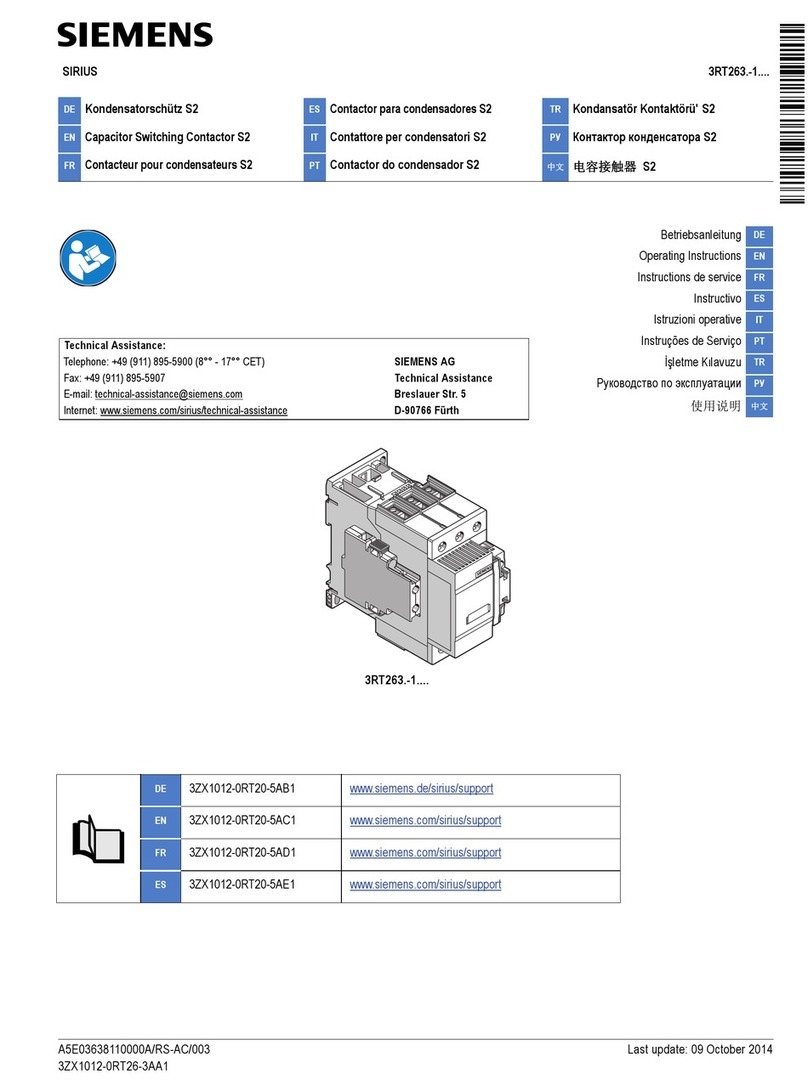
Siemens
Siemens SIRIUS 3RT263-1 Series operating instructions
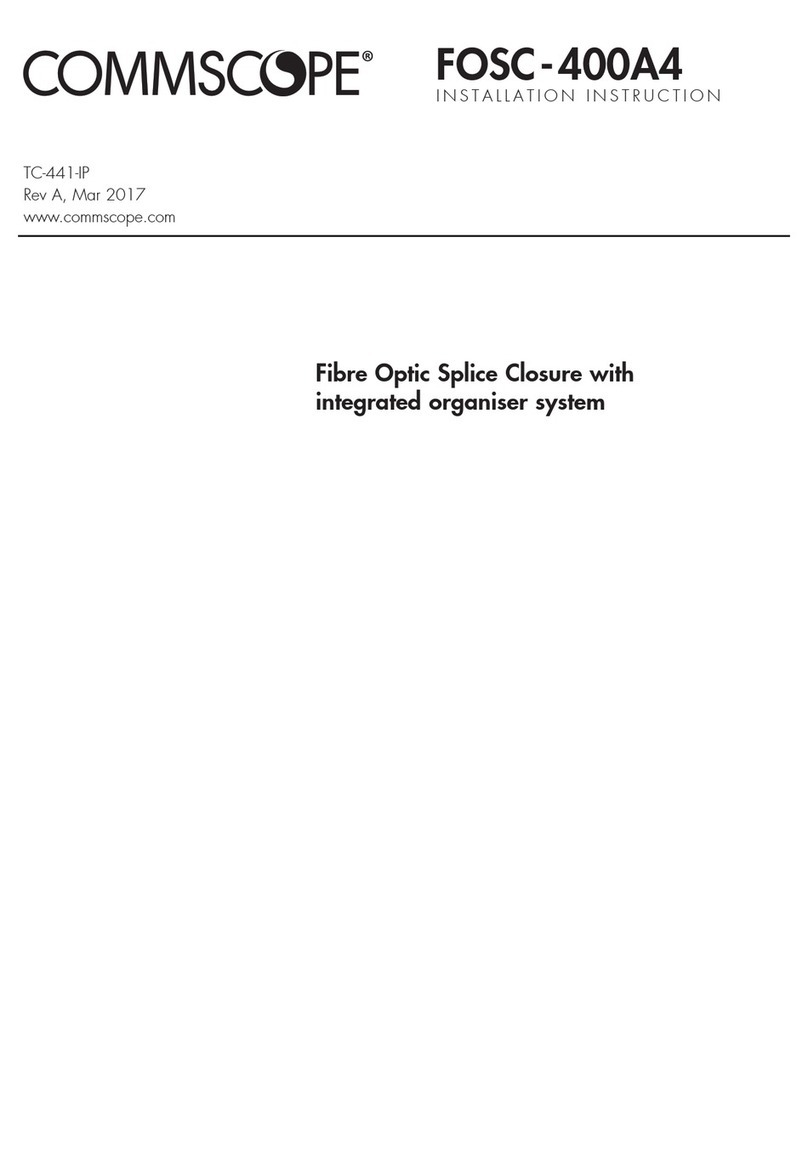
CommScope
CommScope FOSC-400A4 Installation instruction
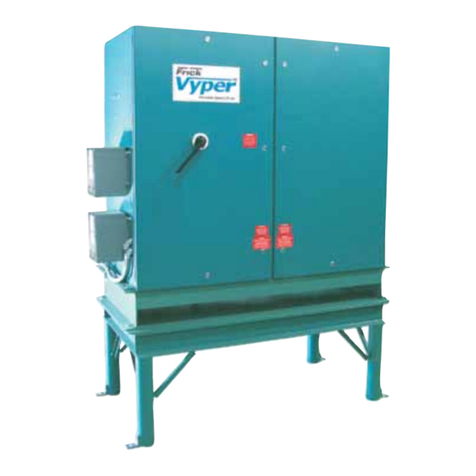
Frick
Frick Vyper 700 Installation operation & maintenance
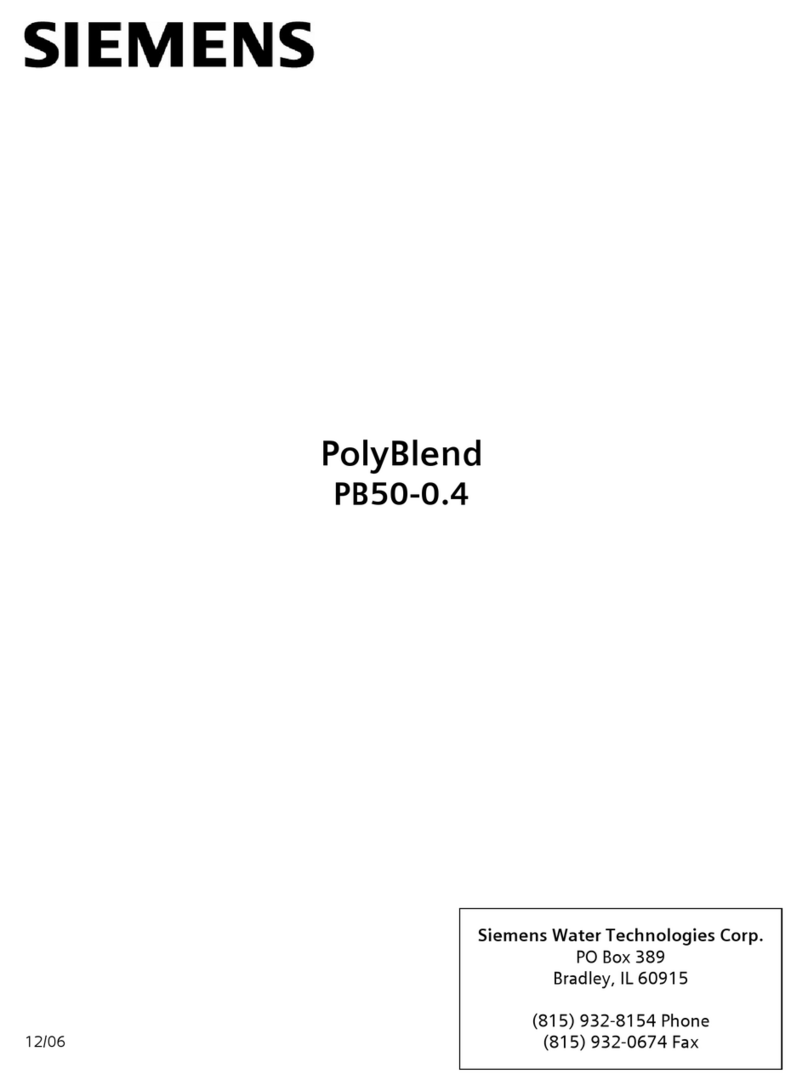
Siemens
Siemens PolyBlend PB50-0.4 Installation, operation and maintenance
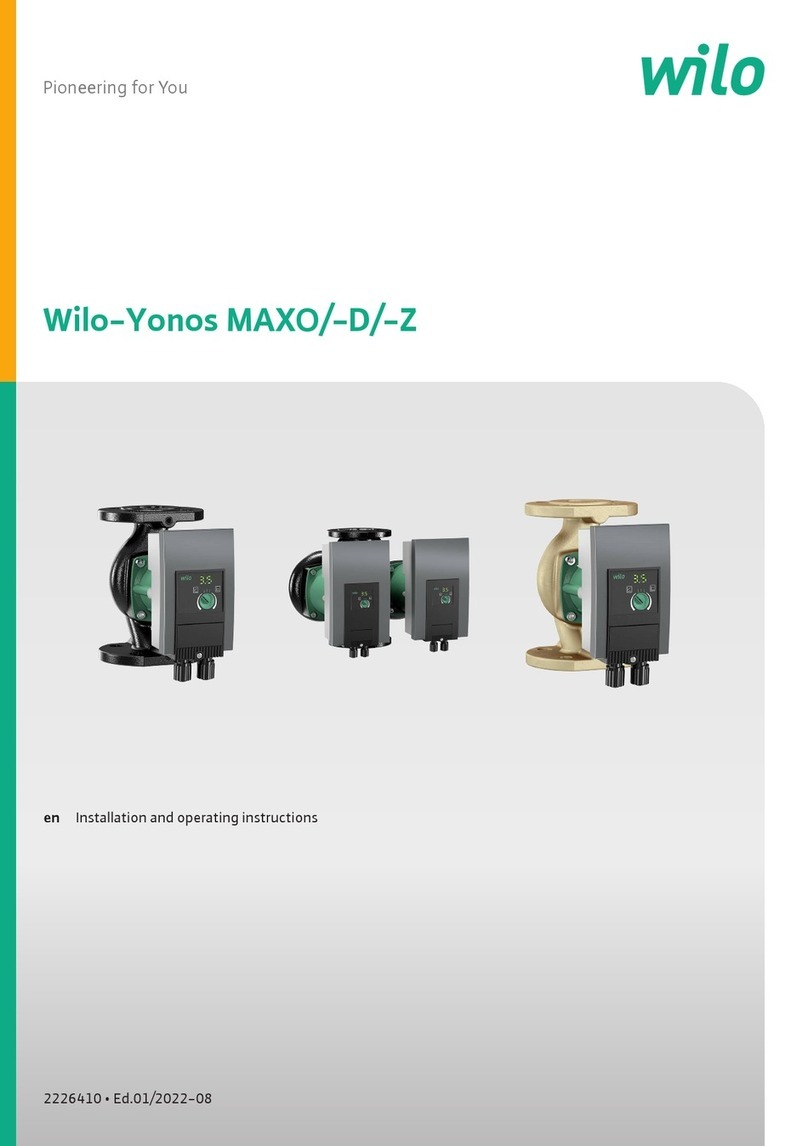
Wilo
Wilo Yonos MAXO Installation and operating instructions
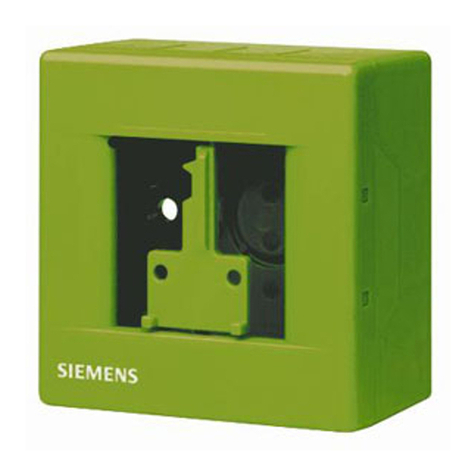
Siemens
Siemens FDMH291 Installation
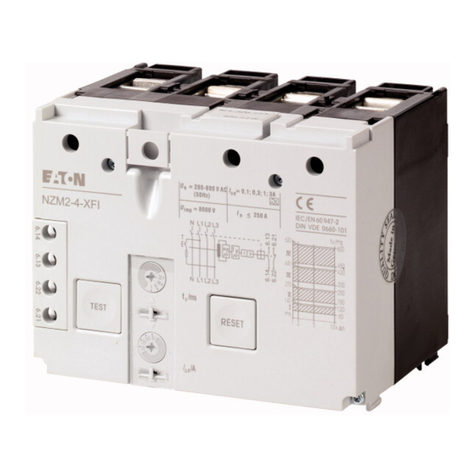
Eaton
Eaton NZM2-4-XFI Instruction leaflet
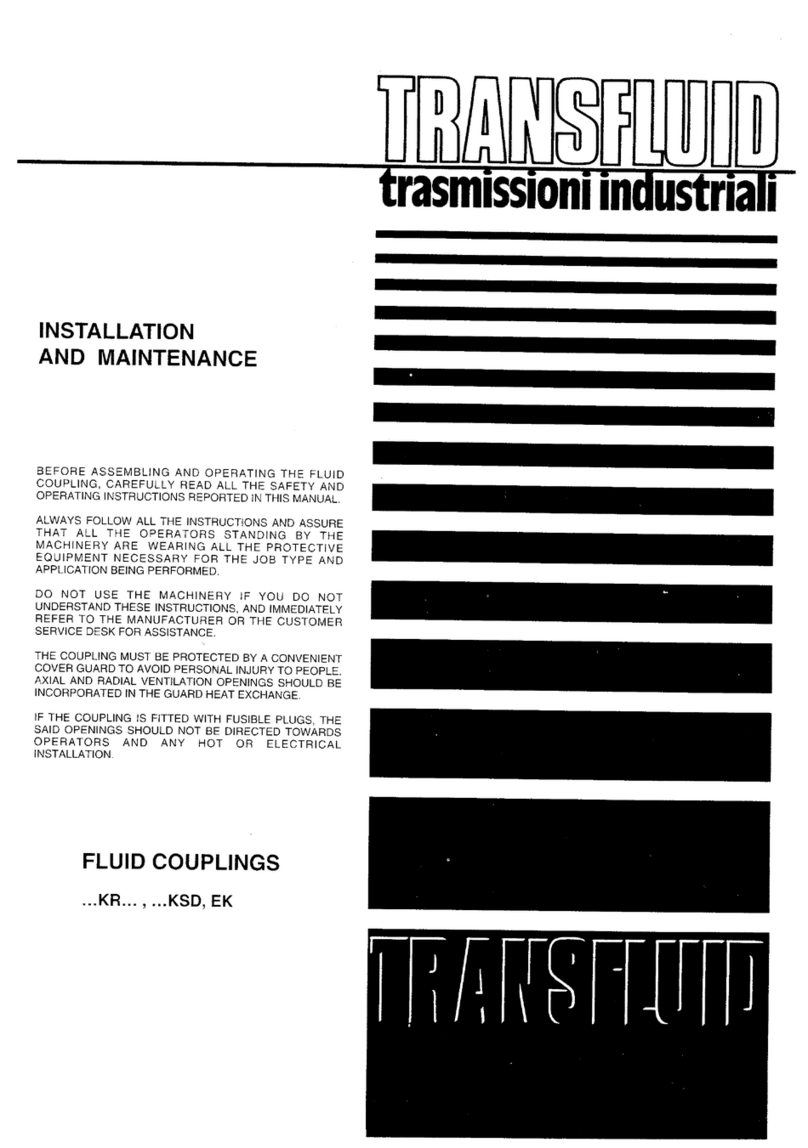
Transfluid
Transfluid KR Series Installation and Maintenance
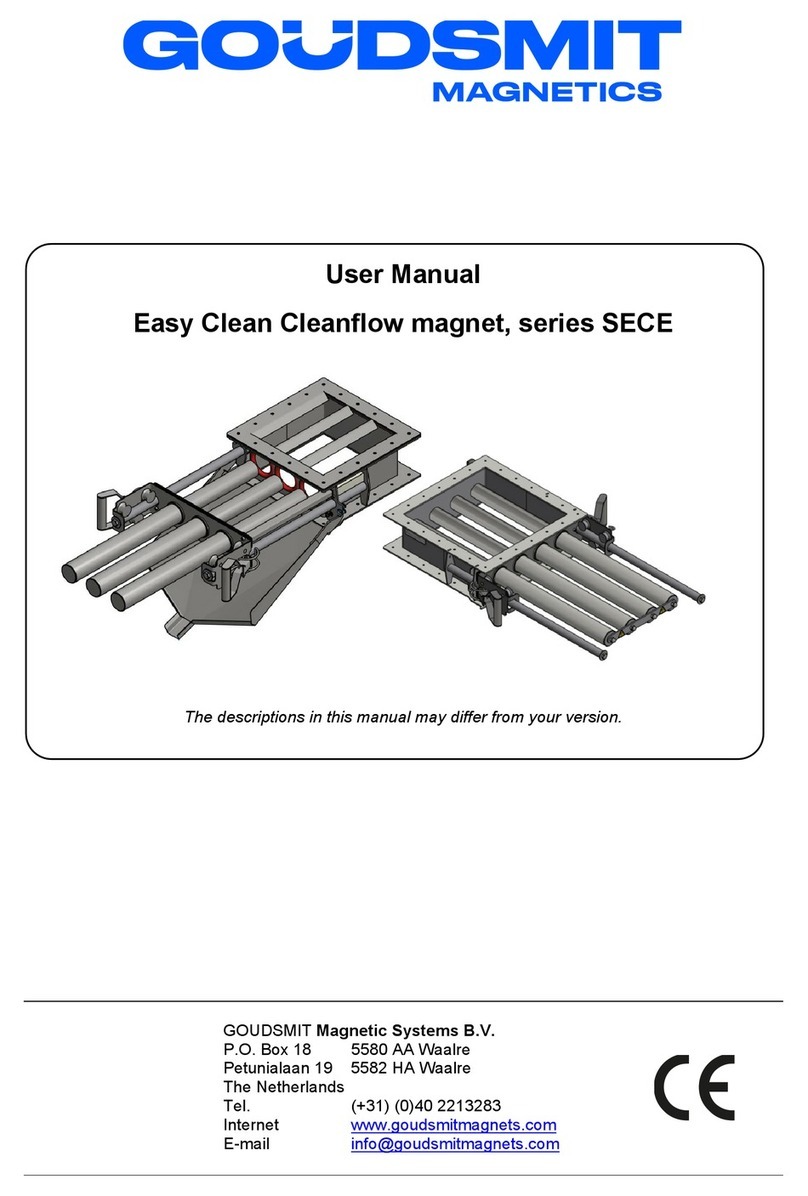
Goudsmit
Goudsmit Easy Clean Cleanflow SECE Series user manual

Jegs
Jegs 81568 Series installation instructions

Fueltec
Fueltec CF4.0-SPO-UL-PCB Operation manual

Siemens
Siemens SICHARGE CC AC22 installation manual
